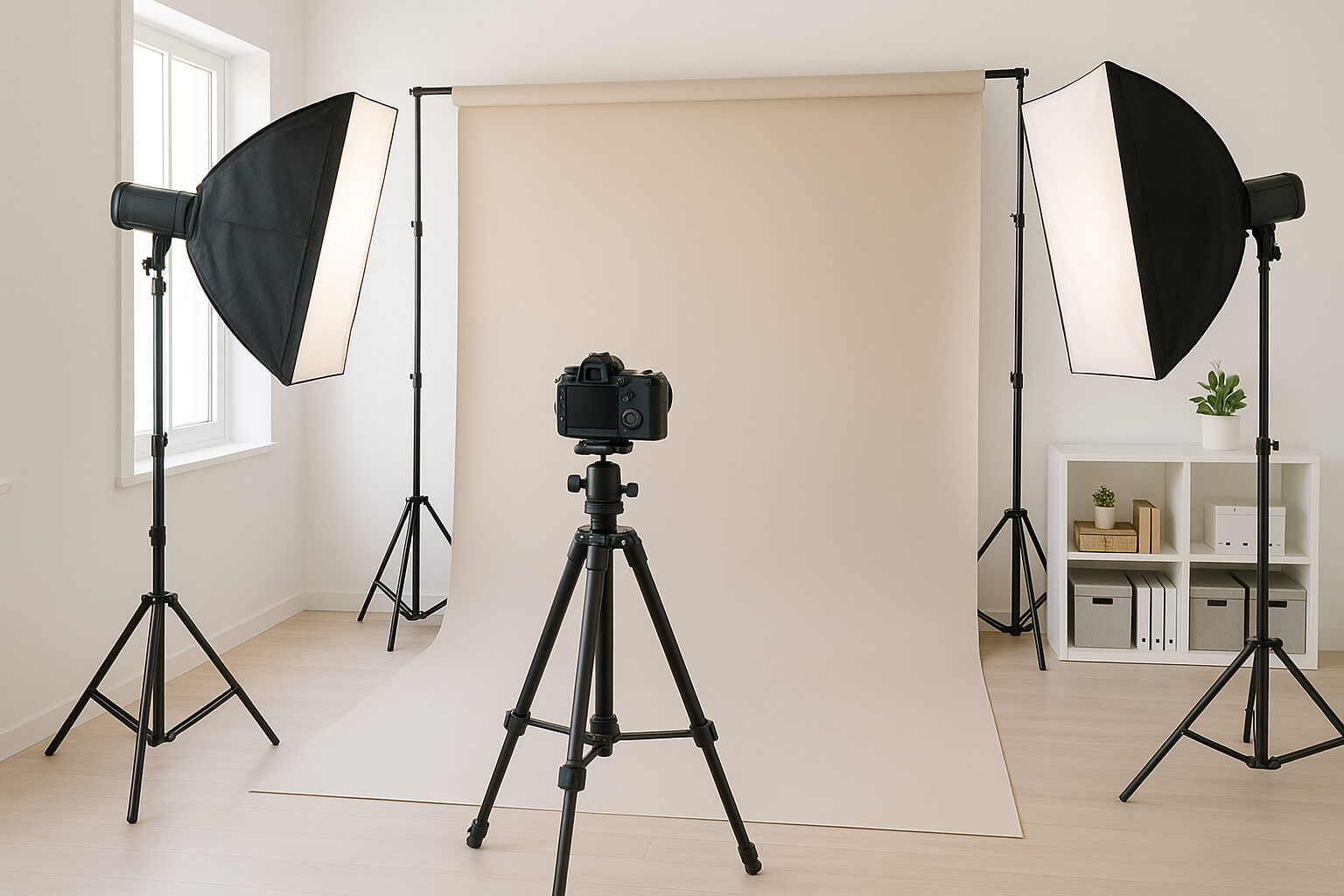June 06, 2025

Creating a home photography studio is one of the smartest moves for photographers looking to take control over lighting, workflow, and creative freedom. Whether you're shooting portraits, products, flat lays, or content for clients, having a dedicated space tailored to your needs can elevate the quality of your work while saving rental costs.
This guide walks you through building a professional-grade photography studio at home, regardless of space or budget.
Start by identifying a room or corner in your home with adequate space, lighting control, and privacy. Ideal features:
Even a 10x12 ft room or a garage can be transformed with the right layout.
Want to turn your home setup into a profitable business? Learn how to start a photography business from scratch.
Lighting is everything in photography. If you're shooting indoors, natural light alone may not cut it. Invest in:
Tip: Position your key light at 45° angles for classic, professional lighting.
Read more about best lighting setups for clothing photography.
Create a variety of backgrounds for flexibility:
Neutral tones like white, gray, or beige are versatile for most photography types.
Want to reach high-paying clients with professional setups? Learn how to get high-paying clients for your photography business.
Depending on your niche, you’ll need gear that suits your purpose:
Keep your gear organized with shelves or camera carts to improve efficiency.
Optimize your work and get discovered online—explore how to optimize your photos for SEO and social media.
These finishing touches help professionalize your home studio:
Even simple changes like blackout curtains or foam soundproofing can improve both photography and video quality.
Get inspired by pros who have scaled their studio setups—read how to scale your photography business.
Once your studio is ready, showcase your portfolio online:
Start now with this guide on how to build a photography website for clients.
And to make your photos rank higher, apply tips from how to optimize your photos for SEO.
Don’t let your home studio sit idle—turn it into an income generator:
Want passive income streams? Learn how to sell your photos online.
A home photography studio empowers you to shoot on your schedule, experiment creatively, and serve clients without the overhead of studio rentals. With careful planning, investment in the right gear, and attention to detail, your spare room or garage can become a professional, money-making workspace.
And as your business grows, you can upgrade gradually and scale confidently.
Don’t forget to protect your work—see tips for editing and protecting copyrighted photos.
Need editing help for restoration projects? Explore the best photo restoration tools in 2025.
Stay up to date with the newest tips, gear reviews, and step-by-step guides to elevate your photography journey from home and beyond.